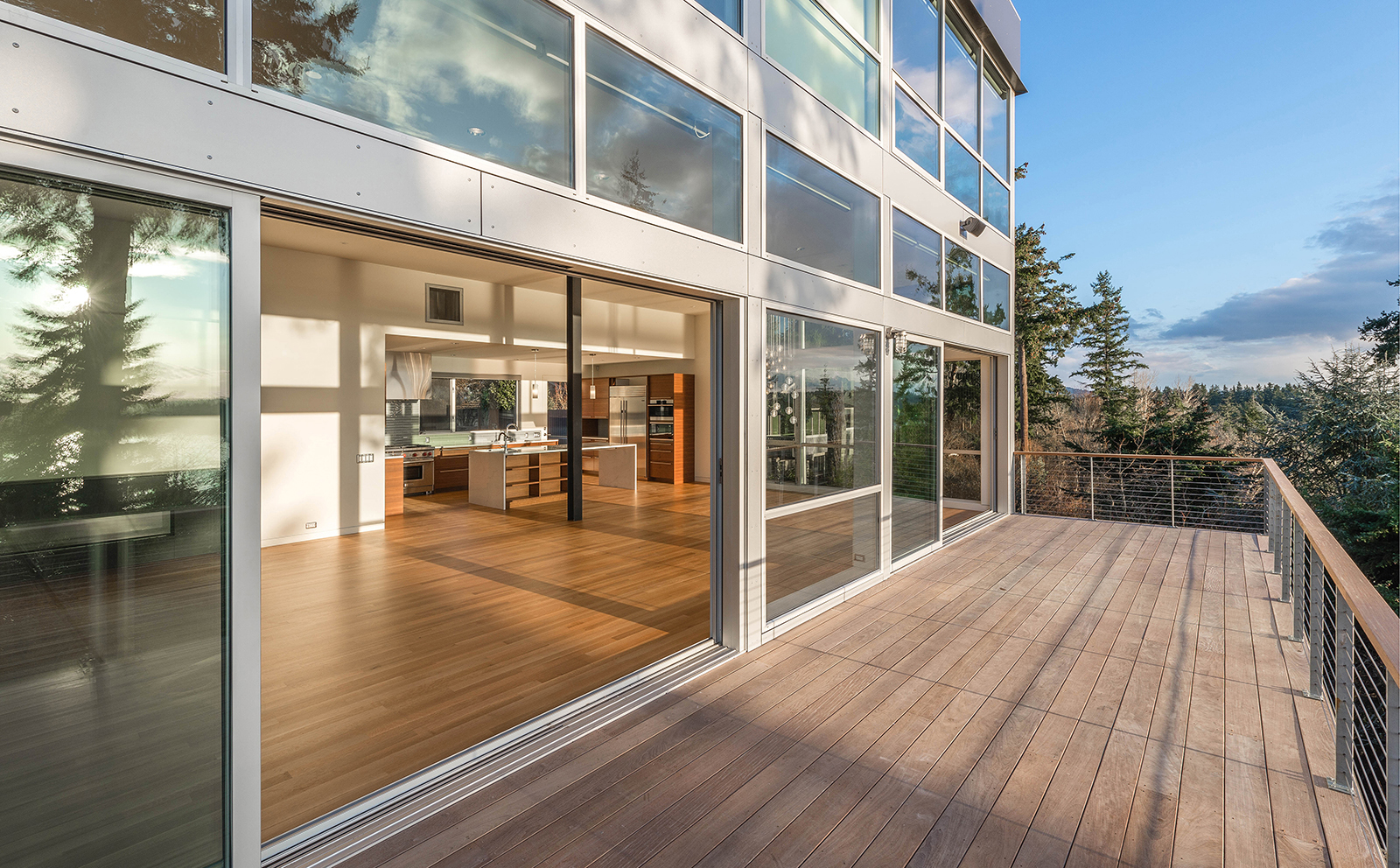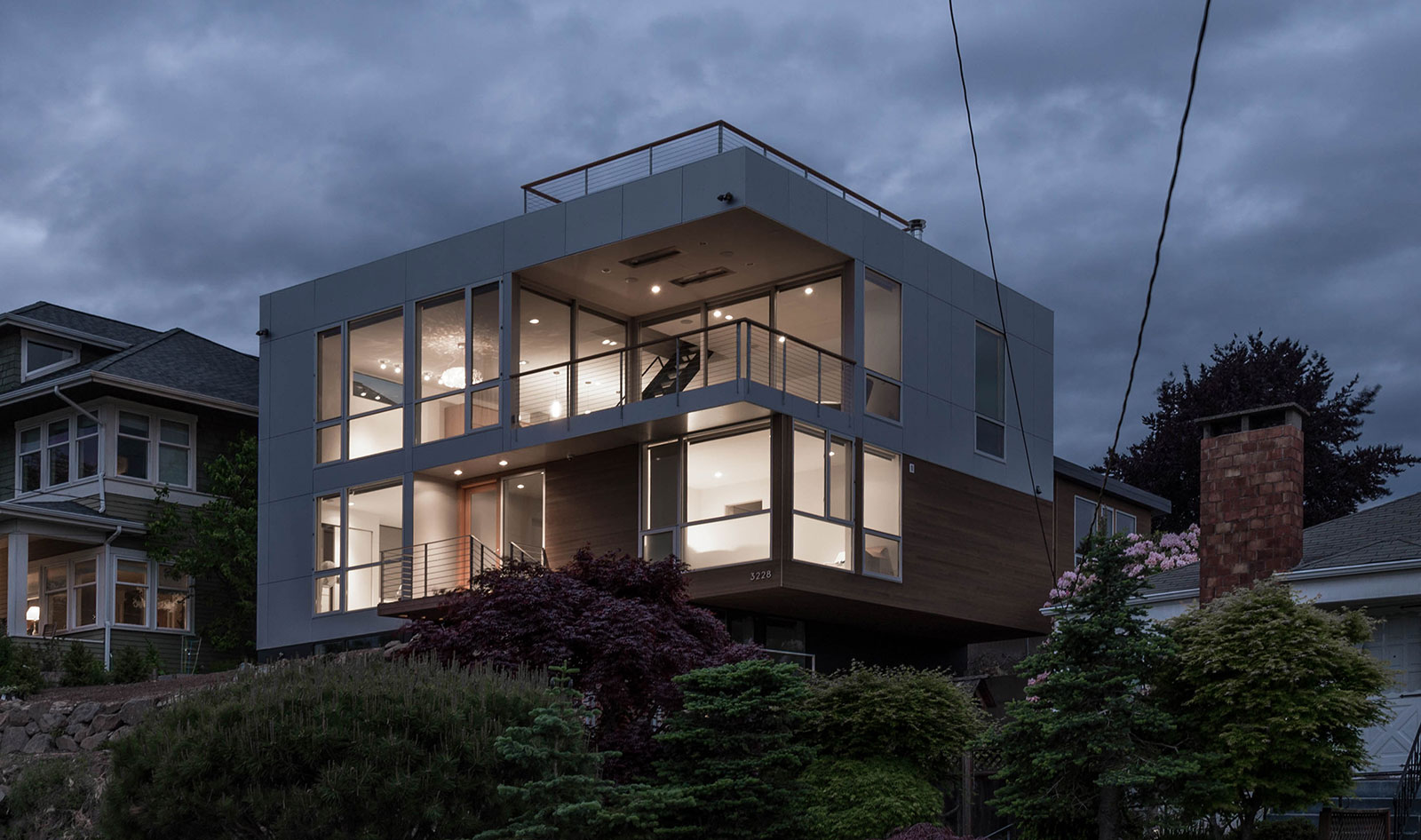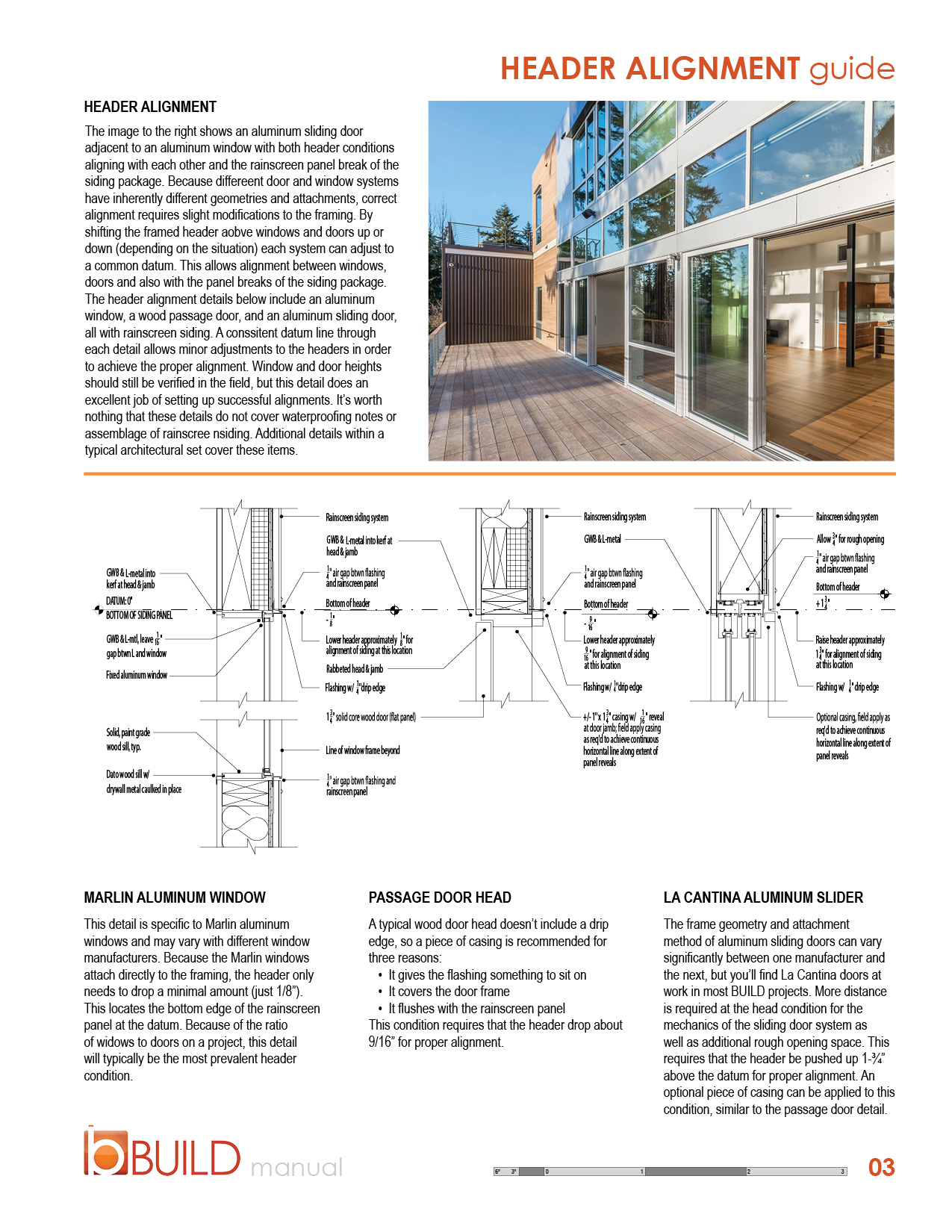
[All images by BUILD LLC]
The alignment of windows, doors and siding breaks at the exterior of a residence or building is a subtle detail that brings harmony and an intention to a project. It’s an indicator of a careful design process and a mindful construction sequence. But when alignment doesn’t occur between exterior features, the composition can be a significant distraction from an otherwise congruent building envelope.
The most challenging of these to accomplish is maintaining a clean horizontal line around a structure above doors and windows at the siding break. Because each door and window system has its own logic and assembly, much of the design exercise deals with finding a common denominator between the different systems and the siding. The top of a window flange, for instance, attaches straight to the framing, while some sliding door systems require a significant space between the door track head and the framing. The frame of an aluminum window typically includes a drip edge that extends proud of the siding, while passage door frames and sliding door frames do not include a drip edge, thereby allowing the siding to overlap. Without proper planning, these variables, along with a few others, can produce an elevation of varying door and window heights and little relationship to the siding panel breaks.
Over the last several years BUILD has been developing what we refer to as our header alignment detail, in addition to the standard head, sill, and jamb details for each window and door on a project. The header alignment detail compares all the relevant doors and windows of a particular project and identifies the horizontal common denominator (e.g., the datum). This datum establishes where the horizontal siding break will occur and, once determined, the placement of framing and headers can be adjusted so that each door and window system gets installed to properly align with the siding break. The image of the Case Study House 2017 below shows a variety of systems including La Cantina clear anodized aluminum sliding doors at the deck, Marlin clear anodized aluminum windows, and a fir passage door at the entry. While each have their own geometry and relationship to the framing, the header alignment detail can arrange them in the correct position so that everything aligns with the siding.

The same is true for the interior of a project as shown below at the Case Study House 2016. The header alignment detail allows the position of the wood door frame and the adjacent Marlin aluminum window frame to align at the top. While there’s no siding break lines to worry about at the interior (most of the time), the relationship still requires a bit of forethought.

The header alignment guide is the 3rd in our BUILD Manual series and includes everything required of this construction technique on one handy sheet. This detail is a go-to on all BUILD projects these days and it’s evolved to the point that we’re happy to share it.
Previous guides can be found here and here. Stay tuned for further additions to the manual.
Cheers from Team BUILD






